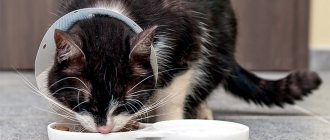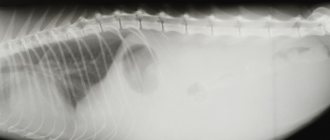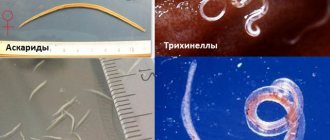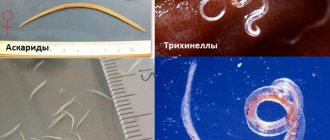In cases of serious illness, all pets require medical attention. And often it has to be provided at home. If it is necessary to give an animal an IV or remove fluid from the bladder, many owners ask questions about how to place and remove a catheter from a cat.
Thanks to this device, it is possible to avoid constant injections. The catheter allows you to give your pet a drip or injection at any time necessary.
© shutterstock
And in the postoperative period or in case of diseases of the urinary system, this device allows you to empty the animal’s bladder of excess fluid completely painlessly.
Why and how to place a catheter
This device is a small plastic or silicone tube that is inserted through the urethra into the bladder. In women and men, the length of the urethra is different; there are features of choosing and placing a catheter, with minimal discomfort for the patient. The presence of a catheter helps in draining urine generated in the kidneys, which accumulates in the bladder if a person is unable to urinate on his own. However, the Foley catheter communicates with the external environment, urine is separated through it, the product can become dirty and clogged, which requires regular cleaning and proper care. In addition, the patient needs to wash, change underwear and clothes, which requires knowledge of how to care for the Foley catheter at home .
Washing, regularly replacing catheters with new products and cleaning the Foley catheter are important to prevent the penetration of pathogenic microbes into the genitourinary tract and the development of inflammation and severe complications. Infection when using a catheter is dangerous as a relapse or complication of the underlying disease, which can lead to re-hospitalization. Regular maintenance of your Foley catheter will help prolong its life, so it will not need to be replaced as often.
Contraindications to epicystostomy
There are relatively few contraindications to suprapubic catheterization:
- small bladder capacity (microcystis) - risk of unintentional damage to the intestines or blood vessels,
- malignant tumors of the bladder,
- active infection of the skin, urinary system,
- severe coagulopathies,
- osteomyelitis of the pubic bone.
Make an appointment
Make an appointment with a urologist by calling 8(812)952-99-95 or filling out the online form - the administrator will contact you to confirm your appointment
guarantees complete confidentiality
Catheter placement
Before starting manipulations, it is necessary to perform all hygiene procedures. The doctor washes his hands thoroughly, puts on sterile gloves, and the patient’s perineum is treated with soap and water and antiseptics. The catheter is taken with sterile tweezers, the tip is treated with a lubricant to facilitate insertion.
The woman is given a special female catheter, taking into account the length and width of the urethra. It is inserted in a lying position, with knees bent and legs apart. After treating the perineum, the doctor spreads the labia, carefully inserting the tip of the catheter into the opening of the urethra. When urine begins to flow through the catheter, the administration is stopped. After this, sterile water is injected through one of the holes at the other end of the product to inflate the balloon and fix the product in the bladder. A urinal is attached to the other hole.
In men, a longer catheter is used, taking into account the size of the urethra. It is administered in the same way, in a lying position, with knees bent and legs apart. The product is moved slowly, gently, first holding the penis in a vertical position, then tilting it down. When urine separates, movement stops.
Before the procedure
Ask questions about your medications
You may need to stop taking certain medications before the procedure. Talk to your healthcare provider about which medications you can stop taking. Below are some common examples.
Blood thinners
If you are taking blood thinners (which affect blood clotting), ask your healthcare provider what is best for you. Doctor contact information is listed at the end of this material. Whether your doctor recommends stopping this medication depends on the type of procedure and the reason you are taking the anticoagulant.
Do not stop taking your blood thinner medications without talking to your healthcare provider.
| Examples of blood thinning medications: | |||
| apixaban (Eliquis®); | dalteparin (Fragmin®); | meloxicam (Mobic®); | ticagrelor (Brilinta®); |
| aspirin; | dipyridamole (Persantine®); | nonsteroidal anti-inflammatory drugs (NSAIDs), such as ibuprofen (Advil®, Motrin®) or naproxen (Aleve®); | tinzaparin (Innohep®); |
| celecoxib (Celebrex®); | edoxaban (Savaysa®); | pentoxifylline (Trental®); | warfarin (Jantoven®, Coumadin®); |
| cilostazol (Pletal®); | enoxaparin (Lovenox®); | prasugrel (Effient®); | |
| clopidogrel (Plavix®); | Fondaparinux (Arixtra®); | rivaroxaban (Xarelto®); | |
| dabigatran (Pradaxa®); | heparin (subcutaneous administration); | sulfasalazine (Azulfidine®, Sulfazine®). | |
Read the resource Common Medicines Containing Aspirin and Other Nonsteroidal Anti-Inflammatory Drugs (NSAIDs) or Vitamin E. It contains important information about the medications you should not take before your procedure and what medications you can substitute for them.
Medicines for diabetes
If you take insulin or other medications for diabetes, ask your healthcare provider who prescribed the medication what to do the morning of your procedure. You may need to change your dose before the procedure. Your healthcare provider will monitor your blood sugar levels during the procedure.
Diuretics (diuretics)
If you are taking any diuretics (which cause you to urinate frequently), ask your healthcare provider what to do next. You may need to stop taking them on the day of your procedure. Diuretic medications are sometimes called diuretics. Examples of such medications include furosemide (Lasix®) and hydrochlorothiazide.
Removing devices from the skin
If you wear any of the following devices on your skin, the manufacturer recommends removing them before undergoing a scan or procedure:
- Continuous Glucose Meter (CGM)
- Insulin pump
Contact your healthcare provider to schedule an appointment closer to your scheduled device replacement date. Make sure you bring a spare device with you that you can wear after your scan or procedure.
If you are unsure how to monitor your glucose levels when the device is turned off, talk to your diabetes care provider before your visit.
Arrange for someone to take you home
You must have a responsible companion to take you home after the procedure. A responsible companion is someone who can help you get home safely and report problems to your healthcare provider if necessary. Agree on this in advance, before the day of the procedure.
If you are unable to find a responsible escort to take you home, call one of the agencies below. You will be provided with an escort who will take you home. There is usually a fee for these services and you will need to provide transportation. You can take a taxi or rent a car, but you need to have a responsible escort with you.
| Agencies in New York | Agencies in New Jersey |
| Partners in Care: 888-735-8913 | Caring People: 877-227-4649 |
| Caring People: 877-227-4649 |
Let us know if you are sick
If you are sick before your procedure (for example, have a fever, sore throat, cold or flu), call your Interventional Radiology provider. Doctor's working hours: Monday to Friday from 09:00 to 17:00. If you call after 5:00 p.m., or on weekends and holidays, dial 212-639-2000 and ask for the Interventional Radiology specialist on call.
Record your appointment time
Interventional Radiology will call you two business days before your procedure, which is Monday through Friday. If your procedure is scheduled for Monday, you will be called the previous Thursday. If you are not contacted by 12:00 noon on the business day prior to your procedure, please call 646-677-7001.
A staff member will tell you when you should come to the hospital for your procedure. You will also be reminded how to get to the department.
Write down the date, time and location of the procedure in this column.
If for any reason you need to cancel your procedure, please notify the healthcare provider who scheduled it.
to come back to the beginning
How to flush a Foley catheter at home
You can use a weak solution of potassium permanganate (1:10000), “Dioxidin”, which is diluted with water 1:40 or “Furacillin” (1 tablet 0.1 g per 100 ml of liquid). It is possible to rinse the catheter with Miramistin, a ready-made pharmaceutical solution, or a product recommended by the doctor. The rinsing is carried out in such a way that the patient does not experience pain or discomfort.
It is important to wash your hands thoroughly and use a sterile syringe with which the solution is delivered. The urinal is disconnected from the tube, and the end is treated with antibacterial solutions. Then attach a syringe, which slowly delivers the rinsing solution. You need to first apply about 20-30 ml, after introducing the liquid into the bladder, the syringe is disconnected. It flows back on its own. The rinsing is repeated three times, then the urinal is reattached.
Day of the procedure
Instructions for drinking before your procedure
You can drink no more than 12 ounces (350 ml) of water between midnight and 2 hours before you arrive at the hospital. Don't drink anything else. Do not drink any liquids two hours before you are scheduled to arrive at the hospital. This also applies to water.
What you need to remember
- The morning of your procedure, take your medications as directed by your doctor. Wash them down with a few small sips of water.
- Do not apply cream or Vaseline® to your skin. You can use deodorants or light lotions to moisturize your skin. Don't wear makeup on your eyes.
- Remove all jewelry, including body piercings.
- Leave all valuables, such as credit cards and jewelry, at home.
- If you wear contact lenses, wear glasses instead if possible. If you don't have glasses, bring a contact lens case with you to the hospital.
What to take with you
- List of medications you take
- Medicines taken for breathing problems (such as inhalers), medicines for chest pain, or both
- Glasses case or contact lens container
- Health care proxy form, if you have completed one
- If you use a CPAP or biphasic positive airway pressure (BiPAP) machine to sleep at night, take it with you if possible. If you are unable to take this machine with you, we will give you one to use during your hospital stay.
What to expect
Upon arrival at MSK, doctors, nurses, and other medical staff will ask you several times to say and spell your name and date of birth. This is necessary for your safety. People with the same or similar names can undergo the procedure on the same day.
You will be taken to the treatment room. If you do not have an intravenous (IV) catheter, your nurse will install one for you. You will be given sleeping pills through the IV catheter.
The catheter site will be numbed with an injection of anesthesia. To place the catheter, your doctor will use fluoroscopy (real-time x-ray), computed tomography (CT) scan, or ultrasound.
After the drainage catheter is inserted, it will be secured to the skin with stitches (sewn) where it exits the body. A thread will be visible around the catheter.
to come back to the beginning
Showering with a catheter and urine bag
It is important to maintain good body hygiene by showering regularly. This reduces the risk of infection. Before standing under the stream of water, the urinal is disconnected and the catheter is clamped with a special clip. When washing, you should gently wash the genitals around the catheter using baby or liquid soap with a neutral pH.
After bathing, the catheter tube is carefully dried, the genitals are blotted with a soft cotton towel, and a clean urine bag is put on. You can swim every day, following these rules.
After the procedure
After the procedure, you will be placed in a recovery room. You will need to stay in bed until the sedative medicine wears off. You can then return to your room or go home with your caregiver.
About your catheter
Figure 1. Black mark on the catheter
There will be a black mark on the catheter above the seam (see Figure 1). The nurse will show it to you. This mark should always be at the same distance from the skin. If the distance changes, the catheter has moved. You should call the interventional radiology department to have a staff member check the position of the catheter.
The outer end of the catheter will be connected to a three-way stopcock (see Figure 2). It is called a 3-way stopcock because it has 3 connection points and a stopcock that can be turned to control the flow of bile. The drainage bag will be attached to the connection point opposite the catheter. The third connection point has a safety valve cap through which you can inject liquids. This valve is called a needleless connector. A bandage will be placed over the catheter.
Figure 2. 3-way faucet
The drainage bag can be secured to clothing with a pin or to the leg using Velcro® straps. At the bottom of the bag is a screw cap that you will use to empty the bag.
The CathGrip® is a device that will prevent the catheter from leaving your body if you accidentally pull on the catheter.
Taking a shower
You can shower, but your bandage must remain dry. Using a shower with a flexible hose will prevent water from getting on the bandage. You should also protect your adhesive bandage. If the adhesive bandage gets wet, change it. Wet bandages are a common cause of skin problems.
Before taking a shower, remove the belt and empty the drainage bag. Secure the drainage bag with tape to your body near the catheter, or use a belt to attach it to your waist. Use adhesive tape to secure cling film or a large enough plastic bag over the adhesive bandage to keep it dry.
You can also use AquaGuard, a disposable, waterproof coating to protect the adhesive bandage. When showering, make sure your catheter is completely covered to prevent it from getting wet.
Using the AquaGuard waterproof patch
- The AquaGuard waterproof patch has removable tape around the edges.
Bend the corner of the tape on each side (see Figure 3). Figure 3. Folding the corners and removing the release tape from the AquaGuard patch - Hold the AquaGuard waterproof patch with the arrows facing up. Remove the top strip and attach the top edge of the AquaGuard waterproof patch over the adhesive bandage. Smooth it out.
- Then grab the folded corner and peel off the strip from one side, straightening the AquaGuard waterproof patch as it sticks.
- Follow the same steps for the bottom and other sides.
Do not allow the AquaGuard waterproof tape to touch the adhesive bandage. It may pull and rip off your bandage when you remove the AquaGuard waterproof patch after showering.
to come back to the beginning
Ordering accessories
Your healthcare provider will provide you with enough supplies for 2 weeks of use. If you need more supplies, they can be ordered through your visiting nurse or we can arrange for the supplier to send them to you. The accessories you need and their quantities are listed below.
| Name | vendor code |
| Adhesive remover – 1 box | 3170 |
| Alcohol wipes – 1 box | 3330 |
| CathGrip - 1 pc. (CathGrip - each) | 2675 |
| Micropore paper tape - 1 box | 3174 |
| Non-sterile gloves – 1 box | 4545 |
| Plain gauze - 1 package | 3424 |
| Skin Prep – 1 box | 3332 |
| Perforated dressing material Telfa - 1 pc. (Telfa - each) | 3327 |
| Drainage bag - 1 pc. (Drainage bag - each) | 3361 |
Prefilled syringes
You will need a prescription for pre-filled syringes with normal saline. You can get a prescription from the IR Clinic. If your local pharmacy does not carry syringes, you can get them from the outpatient pharmacy at Memorial Hospital at 1275 York Avenue, between East 67th Street and East 68th Street. It is open from Monday to Friday, from 09:00 to 17:45. Pharmacy phone number: 646-888-0730.
to come back to the beginning










